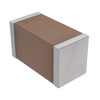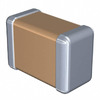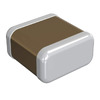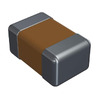Understanding the Types and Uses of Dynamic and Positive Displacement Pumps
2024-05-07
4996
In modern industry and daily life, pumps play an indispensable role. From agricultural irrigation to urban water supply, from chemical production to daily household use, the wide range of applications of water pumps highlights their core position in modern social infrastructure. There are many pump technologies and types, which can be divided into two main categories: dynamic pumps and positive displacement pumps. Each pump has its unique working principle and applicable scenarios, ensuring that fluid transportation and processing can be completed efficiently and reliably under different working conditions. This article will delve into the types, structures, and working principles of various pumps and their key applications in multiple fields, demonstrating the importance of pump technology in supporting modern industry and life.

Figure 1: Power Pump

Figure 2: Power Pump

Figure 3: Positive Displacement Pump

Figure 4: Horizontal Centrifugal Pump

Figure 5: Vertical Centrifugal Pump

Figure 6: Centrifugal Pump

Figure 7: Submersible Pump

Figure 8: Fire Hydrant System

Figure 9: Gear Pump

Figure 10: Diaphragm Pump

Figure 11: Peristaltic Pump

Figure 12: Plunger Pump

Figure 13: Cam Pump
Catalog

Figure 1: Power Pump
Classification and Types of Pumps
Pumps play a role in a wide range of industrial applications and everyday use. There are two main types of pumps: dynamic pumps and positive displacement pumps. Each type differs in structural design and operating principles and is customized for specific environmental and fluid handling requirements.
Power Pump

Figure 2: Power Pump
Dynamic pumps, often called centrifugal pumps, operate using a rotating impeller. This impeller adds energy to the fluid primarily through centrifugal force. As the impeller spins, it forces the fluid outward and toward the pump's discharge point. The effectiveness of these pumps depends largely on the design of the impeller, the speed of rotation, and the characteristics of the fluid. During operation, operators must carefully manage rotational speed and pay close attention to fluid pressure to maintain pump efficiency. Dynamic pumps are typically used where high flow rates and lower pressures are required, such as in municipal water systems and fire protection applications.
Positive Displacement Pump

Figure 3: Positive Displacement Pump
In contrast, positive displacement pumps move fluid by capturing a fixed amount of fluid and then forcing it through the pump's discharge port. These pumps consist of one or more chambers that mechanically change volume through actions such as the forward and backward motion of a piston or the rotation of a gear. As the chamber volume changes, fluid is drawn in and then discharged under pressure. Operators of positive displacement pumps must regularly adjust drive speed and monitor seal integrity to handle fluid viscosity, prevent leaks, and avoid backflow. These pumps are ideal for applications requiring high pressure and precise flow control, such as chemical metering and hydraulic systems.
Types of Dynamic Pumps
Dynamic pumps, particularly centrifugal pumps, are essential in many settings because of their efficiency in fluid movement. These pumps are categorized based on their installation configuration and design into three main types: horizontal centrifugal pumps, vertical centrifugal pumps, and submersible pumps. Each type serves a specific function and setting, depending on its design and operational characteristics.
Horizontal Centrifugal Pump
A horizontal centrifugal pump has a series of impellers, each designed to handle the first partial pressure, all aligned along the same horizontal axis. Typically, the pump accommodates up to eight expansion stages, enhancing the ability to gradually pressurize with each additional stage. This setup provides significant regulation flexibility and high energy conversion efficiency, making it very effective when transporting fluids on a large industrial scale.

Figure 4: Horizontal Centrifugal Pump
To operate the pump, first make sure all connections are tight to prevent leaks under high pressure. Before activation, verify that the lubrication system is fully operational to ensure smooth operation of the impeller and bearings. After the pump is running, monitor the pressure and flow meters to check for consistent pressurization at each stage and to detect any unusual vibrations or sounds.
When the pump enters the expansion phase, operators need to fine-tune flow and pressure settings to maintain steady fluid movement. This level of control requires a thorough understanding of the pump's components and their interactions. Operators must be prepared to make immediate adjustments to address any differences that arise during operations.
Due to their powerful fluid handling capabilities, this type of pump is widely used in chemical, processing, and manufacturing fields. It is particularly valued for its reliability and stable performance, which is very important during long-term and continuous industrial use. Operators recognize and rely on the consistent operation and effectiveness of horizontal centrifugal pumps to manage large volumes of fluids or high-viscosity fluids.
Vertical Centrifugal Pump
Vertical centrifugal pumps, also known as cantilever pumps, are characterized by their structural design in which the bearings are mounted above the pit, allowing the pump body to extend directly into the liquid. This design eliminates the need for additional housing around the pump shaft. Instead, the shaft is protected from corrosion and wear by a throttle bushing, effectively maintaining the integrity of the pump.

Figure 5: Vertical Centrifugal Pump
The vertical centrifugal pump configuration simplifies maintenance tasks. Operators can easily inspect and maintain the pump without having to enter the pit or deploy complex machinery. Before operating, make sure the pump body is properly immersed in the liquid and the throttle bushing is correctly positioned and in good condition. This step helps prevent damage caused by incorrect installation.
During operation, it is important to monitor the pump for unusual vibrations or noises, which may indicate worn internal components or incorrect assembly. Vertical centrifugal pumps are often equipped with pressure and flow sensors. Using data from these sensors, operators can fine-tune pump settings to suit different conditions, improving performance.
These pumps are particularly effective for applications that require moving water from deep pits or wells, such as parts washers. In this case, the vertical design of the pump not only saves space but also ensures stable flow and pressure for optimal cleaning results. Its axial layout provides precise fluid control, increasing the overall efficiency of the pump.
Centrifugal Pump
Centrifugal pumps are among the most commonly used pumps worldwide, favored for their simple, efficient operating mechanisms and cost-effective production. When the motor is started, basic operation begins, causing the impeller to start moving. This motion transfers mechanical energy directly to the fluid. The rotating impeller exerts a centrifugal force on the fluid, dramatically increasing its speed and subsequently converting the kinetic energy into increased fluid pressure.

Figure 6: Centrifugal Pump
The first step to ensuring optimal pump performance is to verify the precise alignment between the motor and the impeller. This precision maintains transmission efficiency and prevents mechanical failure. Before engaging the motor, the integrity of all seals must be checked to eliminate any potential leaks, ensuring safety and operational efficiency. Observe the initial behavior of the pump as it starts up; any signs of unusual vibration or noise may indicate an installation issue or internal mechanical failure.
As the impeller pushes against the fluid, causing its motion to accelerate, it is important for the operator to continuously monitor pressure and flow. These parameters are typically displayed on a console instrument for real-time adjustment. Tailoring flow and pressure to meet specific operating needs optimizes pump efficiency and extends its service life. For example, in water systems, adjustments are needed to effectively handle fluctuations in water demand during peak and off-peak periods.
Centrifugal pumps are versatile and have a wide range of applications, including municipal water supplies, industrial processes, agricultural irrigation, and emergency fire services. Their rugged design enables them to operate reliably in different scenarios, whether managing large volumes of traffic or achieving significant lifting heights.
Submersible Pump
Submersible pumps come in a variety of designs, including rainwater and sewage pump types, which allows them to be used in a variety of areas including construction, residential, industrial, and commercial applications. These pumps are equipped with different impeller types (closed, counterflow, and vortex) to meet specific environmental needs and fluid characteristics.

Figure 7: Submersible Pump
Depending on the submersible pump application, the correct impeller type needs to be selected. Closed impellers are ideal for efficient tasks involving clean liquids. Convection impellers can better handle fluids containing larger solid particles, while vortex impellers are better suited for handling highly contaminated water, such as sewage treatment.
To operate a submersible pump effectively, make sure it is completely submerged in liquid to avoid overheating and potential damage. Before activation, all electrical connections (including power supplies and cables) must be checked to be secure and waterproof to prevent any leakage from entering the electrical components. After starting the pump, watch and listen for signs of smooth operation. Unusual noises may indicate an internal blockage or other malfunction. Regularly monitor the pressure and flow of the pump during operation to make timely adjustments and optimize pump performance.
In residential settings, submersible pumps are often used for basement drainage or garden irrigation, while in commercial and industrial settings they manage more complex tasks such as water treatment or circulation within a system. For example, in construction, these pumps aid in pit drainage and pool water management, while in industrial settings they can handle corrosive liquids during chemical processing.
Fire Hydrant System
A fire hydrant system, also known as a fire hydrant booster or fire pump, is a key component designed to increase a building's firefighting capabilities by increasing the water pressure and flow of fire hydrants. Ensuring a fast and efficient water supply is particularly important when the mains power supply is unable to meet demand during a fire.

Figure 8: Fire Hydrant System
To maintain the readiness of a fire hydrant system to respond to emergencies, it must be inspected and tested regularly. The operator's first step in system testing is to verify the tightness and integrity of all connections to prevent leaks and potential damage. Before starting the system, you must check that the power supply is connected securely and stably. Operators should also inspect the pump and its drive motor for any signs of trouble, such as unusual noise or vibration.
Immediately after starting up the system, attention must be paid to the pressure gauge and flow meter. Monitoring these readings can confirm that the system is operating within its specified pressure limits. Operators must verify the flow of water at the hydrant outlet to ensure it is stable and powerful enough for effective spraying over long distances.
In addition to emergency firefighting, hydrant systems help irrigate city parks and extensive farmland. In these environments, not only efficient drainage is required, but also the ability to regulate flow and pressure according to varying irrigation needs. Operators need to be proficient in the system's different modes and adjustment techniques to effectively manage water distribution.
Types of Positive Displacement Pumps
Positive displacement pumps are designed to move a set volume of liquid using direct mechanical action, thereby providing precise control of flow. This category includes gear pumps, diaphragm pumps, peristaltic pumps, piston pumps, and lobe pumps, each type suitable for a specific application based on its mechanical operation.
Gear Pump
A gear pump is a highly efficient rotary positive displacement pump that continuously delivers fluid through the precise interaction of two or more internal gears. This mechanism is particularly effective for conveying viscous liquids that require stable flow management, such as fuels and lubricants. A major advantage of gear pumps is that there are no internal valves, which minimizes friction and energy loss during operation, thereby increasing overall efficiency.

Figure 9: Gear Pump
It is necessary to ensure the cleanliness inside the gear pump during operation. Any residual material may prevent the gears from meshing smoothly, affecting performance. Before using the pump, especially when using high-viscosity fluids, it must be preheated. This process reduces the viscosity of the fluid, simplifying the start-up phase and increasing the efficiency of the pump. Operators must carefully monitor pump pressures and temperatures to ensure they remain within safe operating parameters.
While gear pumps are valued for their efficiency and reliability in managing industrial fluids, they are not suitable for fluids that contain solid particles or are corrosive. To avoid damaging the gears or corroding the pump body, it is recommended to use a filter or choose an alternative pump type when handling such substances.
Regular maintenance can improve the performance and life of your gear pump. This includes inspecting gears for signs of wear, changing lubricants, and checking the integrity of seals. Effective maintenance not only extends the service life of your pump but also maintains its high operating efficiency.
Diaphragm Pump
Diaphragm pumps, especially air-operated diaphragm pumps (AOD pumps), are favored by various industries because of their unique design and flexibility. These pumps use compressed air to alternately drive two flexible diaphragms, effectively pushing fluid around. AOD pumps are particularly valuable in hazardous environments because they operate safely without the need for electricity, making them ideal for handling volatile chemicals or sensitive materials.

Figure 10: Diaphragm Pump
To operate a diaphragm pump effectively, it is necessary to ensure a stable supply of air in terms of pressure and flow, as this directly affects the performance of the pump. Before starting the pump, make sure the air supply connection is secure and leak-free. It is also important to inspect diaphragms and valves for signs of wear or damage to prevent operational failures.
Immediately after starting the pump, the operator should check the pressure gauge and flow meter readings. The air intake should be adjusted as needed to control the pump's delivery rate and maintain consistent pressure to ensure smooth fluid flow.
Diaphragm pumps are known for their self-priming capabilities, allowing them to operate from a dry state and effectively handle liquids of various temperatures and viscosities. This feature is particularly beneficial for industries such as mining and heavy industry where pumps may need to convey abrasive slurries. The rugged, wear-resistant construction of these pumps minimizes maintenance requirements and extends their service life.
In industries such as food and pharmaceuticals, diaphragm pumps play a role in the safe transport of contamination-sensitive materials such as food ingredients or active pharmaceutical ingredients. In these applications, pump cleanliness needs to be maintained. Operators must maintain hygienic practices and regularly replace any diaphragms and tubing in contact with consumables to prevent cross-contamination.
Peristaltic Pump
Often called a tube pump, a peristaltic pump works on a simple yet effective principle: It cycles through a series of rollers or wheels that compress and release a flexible hose, pushing fluid through the hose. This approach provides peristaltic pumps with superior flow control accuracy for applications requiring precise metering and mixing.

Figure 11: Peristaltic Pump
Preparing a peristaltic pump for use requires careful attention to the hose. The material and condition of the hose significantly affect the functionality of the pump and the purity of the fluid it handles. Before using the pump, make sure the hoses are installed correctly and are not damaged to prevent fluid leakage or contamination. When starting the pump, gradually adjust its speed to effectively manage flow, aiming to minimize hose wear and avoid fluid shock due to excessive acceleration.
Peristaltic pumps play a role in industries such as food production, chemical processing, and healthcare. In the food sector, they are used to handle sticky products such as toothpaste. In chemical applications, peristaltic pumps precisely meter chemicals to ensure accurate chemical reactions. In medical settings, these pumps are essential for administering and dosing medications, and their sterile operation and high precision maintain medication safety and effectiveness.
Operating a peristaltic pump requires strict compliance with cleanliness and routine component inspection. Hoses must be replaced at intervals recommended by the manufacturer to maintain pump efficiency and hygienic standards. Operators should also be fully familiar with the pump's performance parameters and adjustment methods to adapt to different working conditions and ensure that flow accuracy and operating efficiency achieve the desired results.
Plunger Pump
Piston pumps are high-efficiency positive displacement pumps that rely on the reciprocating motion of a piston to generate tremendous pressure, making them ideal for applications requiring precise pressure control. This pump is particularly effective in high-pressure environments, which is why it is favored in industries such as water irrigation, food processing, and paint spraying.

Figure 12: Plunger Pump
Operation and maintenance of piston pumps require caution. First, operators must verify the condition of all pistons and seals as these components operate efficiently and prevent leaks. Before starting the pump, a pressure test must be performed to detect any leaks or unexpected pressure drops and to ensure that the safety valve and pressure regulator are set correctly and operating within their specifications.
Piston pumps are particularly advantageous when processing sticky foods such as pastries and chocolate. In these applications, the stroke length and speed of the piston are fine-tuned to maintain the correct pressure and flow, maintaining the texture and shape of the food without causing excessive compression or damage. during food processing. The pump body and any parts that come into contact with food need to be cleaned and disinfected regularly to avoid contamination.
The durability of piston pumps comes from their rugged construction and minimal moving parts, which together reduce the likelihood of mechanical failure and extend the life of the equipment. However, it is still necessary to regularly inspect and replace any worn parts, such as piston rings and seals, to ensure that the pump continues to perform at its best.
Cam Pump
Cam pumps are known for their powerful fluid management and excellent corrosion resistance. Due to their advanced pump chamber design, these pumps are ideally suited for handling dense fluids and slurries containing solid particles, with efficiency exceeding that of traditional gear pumps, especially for handling challenging materials such as food and chemical slurries.

Figure 13: Cam Pump
Operating and maintaining a cam pump involves precise and thorough procedures to ensure optimal performance and longevity. First, inspect the pump body and cam for any signs of wear or damage, and verify that all seals are tight to prevent leakage under high-pressure conditions. Before starting the pump, the operator should perform a pre-start inspection to ensure the lubrication system is adequately supplied to minimize friction and wear.
The cam pump's stainless steel construction and high-quality polishing not only enhance its corrosion resistance but also make it highly valued in the food and pharmaceutical fields. In these industries, keeping pumps clean is imperative. Operators need to clean and disinfect pumps regularly to prevent contamination of sensitive products. Additionally, adjusting pump speed and flow to meet varying production needs is a critical daily task.
In the food industry, lobe pumps are often used to transport highly viscous items such as ketchup and chocolate. In the pharmaceutical field, they efficiently transport pharmaceutical slurries containing fine particles. Operators in these industries must be particularly vigilant about internal cleaning to ensure the integrity and safety of the products being processed.
Conclusion
Through in-depth analysis of the design and application of various types of pumps, we can see that whether they are power pumps or positive displacement pumps, they have demonstrated unparalleled efficiency and adaptability in their applicable fields. From hydrant systems that improve fire safety to diaphragm pumps that operate in special environments, continued technological advancement and innovation in pumps allow them to meet increasingly complex industrial needs and everyday demands. In the future, with the further development of technology, the application fields of pumps will be wider and the efficiency and reliability will be further improved. Ultimately, the continuous innovation and application of these pump technologies will continue to promote the development of social infrastructure and ensure the smooth operation and efficient production of all walks of life.
Frequently Asked Questions [FAQ]
Q1. Which type of pump is most commonly used?
Centrifugal pumps are the most commonly used pump type. Its working principle is to use the rotating impeller to push the fluid to the periphery through centrifugal force, thereby increasing the kinetic energy of the fluid and converting it into the required pressure and flow rate. Due to its simple structure, easy maintenance, and low cost, centrifugal pumps are widely used in water treatment, chemical industry, municipal engineering and construction, and other fields.
Q2. Which pump is used for high pressure?
Reciprocating pumps are ideal for handling high-pressure needs. This type of pump works by reciprocating a piston in a sealed cylinder and can provide a high-pressure output. Reciprocating pumps are particularly suitable for applications requiring high-pressure transfer, such as oil field injection, high-pressure washing, and the transfer of chemical feedstocks.
Q3. Which pump is used for high flow?
Axial flow pumps and mixed flow pumps are common pump types used in high-flow applications. The impeller of an axial flow pump is similar to a paddle, and the fluid moves along the axis, making it suitable for transporting large amounts of water, such as flood control and irrigation. Mixed flow pumps combine the characteristics of centrifugal pumps and axial flow pumps. They can provide higher flow rates while also generating a certain pressure. They are suitable for large-scale water circulation systems in municipal and power industries.
 ABOUT US
Customer satisfaction every time. Mutual trust and common interests.
ABOUT US
Customer satisfaction every time. Mutual trust and common interests.
function test. The highest cost-effective products and the best service is our eternal commitment.
Hot Article
- Are CR2032 and CR2016 Interchangeable
- MOSFET: Definition, Working Principle and Selection
- Relay Installation and Testing, Interpretation of Relay Wiring Diagrams
- CR2016 vs. CR2032 What’s the difference
- NPN vs. PNP: What's the Difference?
- esp32 vs stm32: which microcontroller is better for you?
- LM358 Dual Operational Amplifier Comprehensive Guide: Pinouts, Circuit Diagrams, Equivalents, Useful Examples
- CR2032 VS DL2032 VS CR2025 Comparison Guide
- Understanding the Differences ESP32 and ESP32-S3 Technical and Performance Analysis
- Detailed Analysis of RC Series Circuit
 Detailed Analysis of RC Series Circuit
Detailed Analysis of RC Series Circuit
2024-05-08
 Boost Converter: Working Principle, Design and Functions
Boost Converter: Working Principle, Design and Functions
2024-05-07
Hot Part Number
 CGA2B3X7R1V683K050BB
CGA2B3X7R1V683K050BB CGA4J3C0G2E562J125AA
CGA4J3C0G2E562J125AA C3216CH1H473K115AA
C3216CH1H473K115AA CGA3E2X5R1H473K080AA
CGA3E2X5R1H473K080AA GRM0335C2A7R6DA01J
GRM0335C2A7R6DA01J 0805YD102KAT2A
0805YD102KAT2A GR442QR73D391KW01L
GR442QR73D391KW01L CC1812KKX7RABB473
CC1812KKX7RABB473 GRM0335C1H620GD01D
GRM0335C1H620GD01D TAJS105M025RNJ
TAJS105M025RNJ
- ESD101B102ELSE6327XTSA1
- 0603YC273KA12A
- ATF1500A-12JC
- A1010B-PQ100C
- CY8C22345-24SXI
- MPC860ENCZQ50D4
- V24B48T200BL
- SI4713-B30-GM
- ISL6262ACRZ
- 7MBR35SB120H-70
- VI-B13-02
- M74HC4052TTR
- STM8S207S6T6C
- UPD78F9489GK-9EU-A
- SN75C189ADRE4
- LM239AMDREP
- MT25QL512ABB8ESF-0AAT
- PTN78000WAZ
- AM29F400BT-150SC
- FT24C64A-CTR-T
- M74HC595B1
- MPC949FA
- MT48LC32M8A2FB-75:D
- PI2EQX4402ANBX
- PI74FCT162373TAE
- SG32QUAC
- STM32F103RDY6TRC24
- TLE6210G-C1
- VSSR1605331471JUF
- K4W2G1646P-HC12
- KA5SDJAS01TSN
- SB61L256AS-12G
- TVP9000ZDSR
- U2321B-AFPG3
- XC3090TM-100
- MSD6A801FVA-X2
- BCM11350B3KFEBGT
- SDA80D51-HT
- IHLM2525CZER1R0MA1